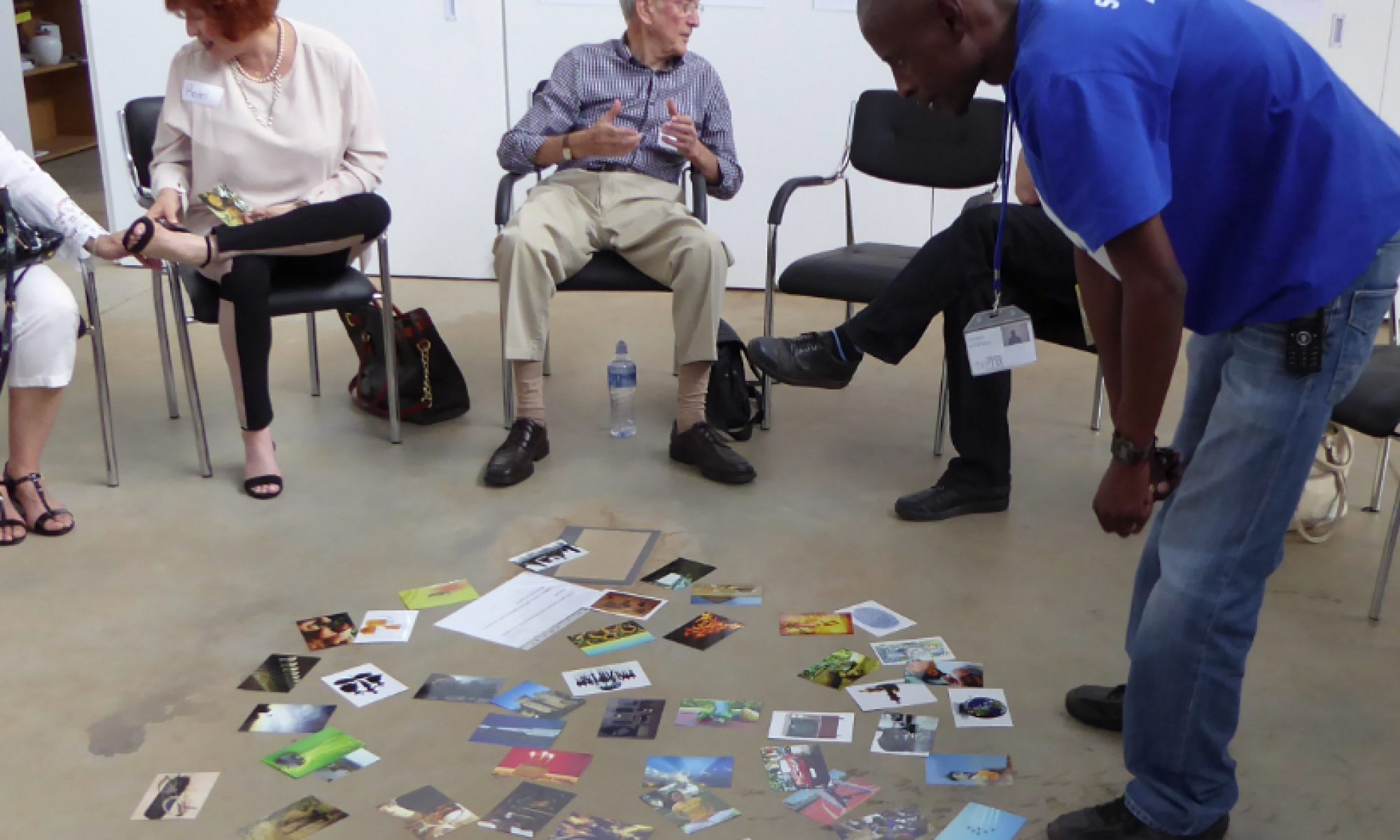Objectives:
- To practice non verbal negotiation skills.
- To interrogate the relationship between words and body language
- To elicit conversation about the principles of negotiation, collaboration and team work.
- To brainstorm and practice solutions to group conflicts
- To explore the underlying motivations of conflict
Overview:
Two teams on opposite sides negotiate their claim on land using gibberish.
Time: 10-20 min
Group size: 6-30
Flow:
The facilitator divides the participants arbitrarily into 2 groups. Each group lines up on opposite sides of an open space. The facilitator explains that the space represents a strip of land that lies between the occupied land of two communities. On the land grow beautiful big trees. One community wants the land so they can preserve the trees, the other wants it so they can cut them down and use them.
The groups decide which community they represent and why they either want to preserve or use the trees. They can preserve it for instance because the trees mark sacred graves, or are sacred themselves or because the community wants to conserve the environment for future generations etc. The other group may want to use the trees for shelter against fierce winds, or for fuel against cold winterss or to sell for a profit. The groups negotiate their reasons amongst themselves in gibberish as a practise round.
Next the facilitator asks them to pick a negotiator that will meet the negotiator of the other group in the middle of the open space. Selected negotiators are instructed to meet each other and begin the negotiations in gibberish. The rest of the community is asked to support their negotiators in gesture and sound where presumed fitting. Negotiations cease when either side gives up, or when the facilitator feels it has done what it can for now. Or, when it becomes too fiolent.
Once the first round has been debriefed, participants may go a second and third round until the game has achieved what it can for the moment.
Debriefing questions:
- What was this like for the negotiators?
- What was it like for the group members?
- What was intersting? Perplexing? Hopeful?
- Where did it go wrong? What might be the reasons?
- What worked? Why do you think this happened?
- What would you do differently? More of? Less of?
- Would you like to try again?
- Did you experience or observe any stereotypical genderist/agist/racist feelings or behaviour during any part of the game play? What do you think caused this? (Our experience is that the absence of language levels the playing field to a large degree and that stereotypical behaviour decrease the more participants genuinely seek agreement.)
Variation:
- For an extra kick you may introduce an element of tension by inventing a reason why there is a time urgency to conclude negotiations: E.g. winter storms are brewing and the tree users must build their shelters before it strikes, but the other group believes the crisis is exactly what is needed to find other solutions since no threat should interfere with the principles of conservation/ sacred tradition etc.
- Ask participants to pair up with some from the opposite team. LEt them discuss what in the game play made them feel closer to, or further from, agreement. After some moments of discussion, ;et the, return to their teams and discuss what they had learned. Play another round where they impliment their discoveries.
Online adaptation
In the absence of spatial orientation in the online room, we suggest that you change the scenario to fit the context. E.g. Participants are all part of a production company who has landed their first major TV series. The stakes are high. They need to make a reality show with a certain family. One part of the team believes they should work with the family as natural as possible and not interfere with how they appear on screen. The other side believes that some performance training is needed, and that hair and make-up alterations are essential to present the family in a certain way for entertainment purposes. The team must come to an agreement before they pitch their concept to the client. Introduce tension by suggesting that they client is waiting in the next room for their concept presentation.
This adaptation works because the gestures can center around the face and hair which is most visible in the screen. It is limiting because it does not really relate to the survival of a community or the environment to the same extent as does the land conversation, but it is still very effective.



